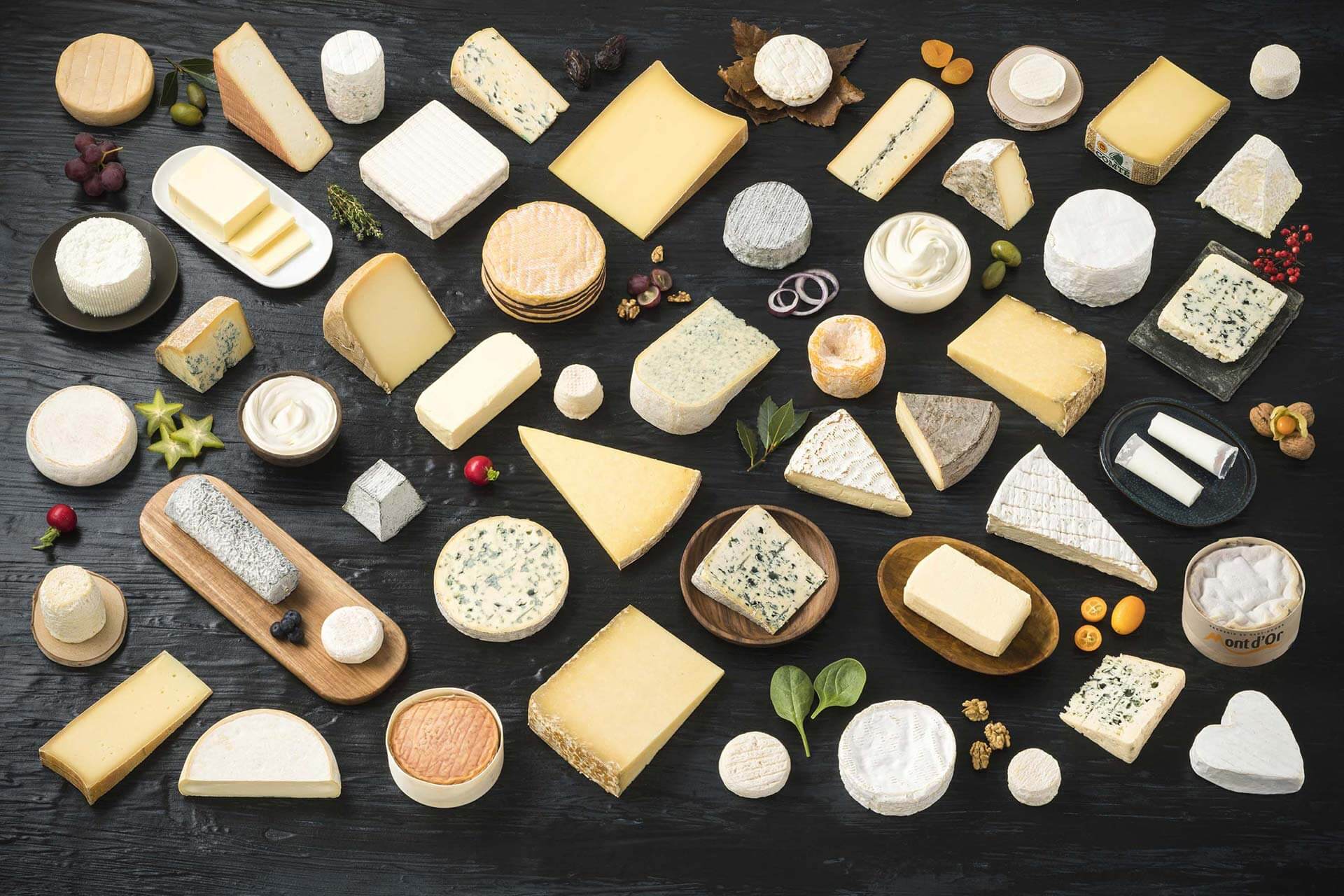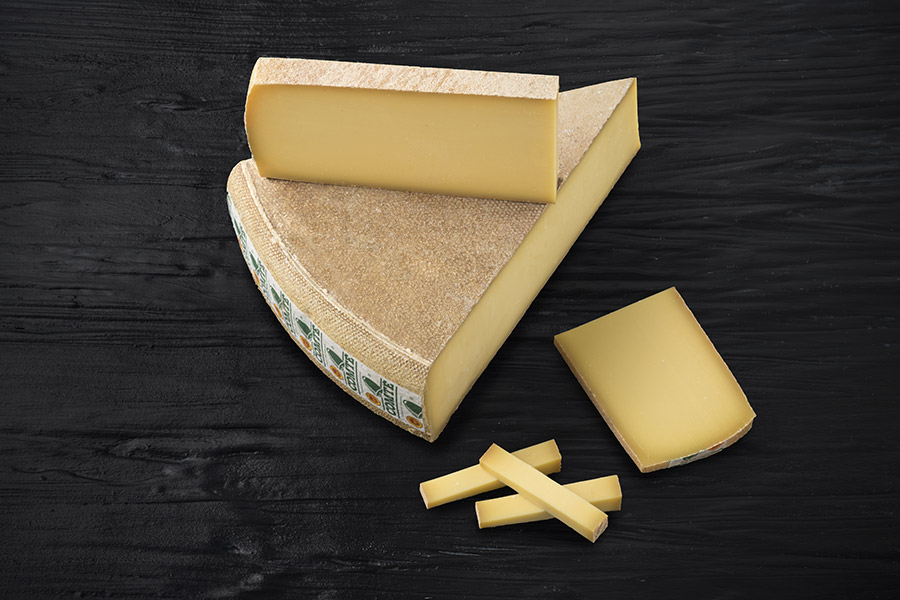Comté
Produced in the Jura mountains, which is a region with a clear differentiation between the seasons, Comté can only be made with raw milk from Montbéliarde or French Simmental cows made fed exclusively on fodder from the designated area of origin. The number of litres needed to make a wheel (450 litres on average) drove peasants in the Middles Ages to introduce a novel village organisational structure, kind of precursors of cooperatives. Comté is a cooked pressed cheese that has been aged for at least four months. But some wheels of this noble cheese are left to mature for eighteen or even twenty-four months. It is characterised by an amazing diversity of flavours. Its tastes reflect the prairies it comes from, the season and the particular touch of the maker and the way it was matured in the cellar … Each wheel tells a story … and every story is different.
-
Cheeser
Cow’s milk -
YEAR OF LABELLING
1958 -
Raw milk
-
Pressed cooked cheese
Key figures
-
2 389 Farms
-
140 Production plants
-
15 Maturing plants
-
64 500 Tons marketed in 2020
READ MORE
www.comte.com

